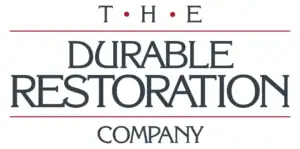
With our wide range of specialized restoration skills and professional experience, The Durable Restoration Company is well-equipped to restore and preserve your historic structure.
Whether it be completely restoring a historic building or making specific repairs, we can provide you with a thorough, expert analysis of your property from one of our in-house Preservationists. Once established, your project would then be in the care of our world-class Craftsmen.
Our Craftsmen take pride in restoring historic structures correctly and beautifully. You can count on us to work as part of a team with the client, architect, and other trade professionals to get the job done on time, ensuring it will last for generations to come.
Whether it be completely restoring a historic building or making specific repairs, we can provide you with a thorough, expert analysis of your property from one of our in-house Preservationists. Once established, your project would then be in the care of our world-class Craftsmen.
Our Craftsmen take pride in restoring historic structures correctly and beautifully. You can count on us to work as part of a team with the client, architect, and other trade professionals to get the job done on time, ensuring it will last for generations to come.
THE WORK WE DO
Steeples, Domes, & Roofs
When it comes to steeples, domes, and historic roofing restoration and repairs, few have more experience and expertise than our team. Our in-house experts have studied and examined these types of structures, materials, and installation techniques throughout the world. We will bring all this knowledge and passion to you to help ensure your project has the correct assessment, and to assure the original look and aesthetics are preserved for many generations to come.
Assessment & Consulting
Our team of knowledgeable historic preservationists offers the ability to create many documents that can aid in the continued preservation of your structure. These include preservation plans, Condition Assessments, Restoration Priority lists, and even material and method specifications. We can also create an "owner’s manual” for the proper site-specific techniques of preservation.
Historic Brick, Stone, & Terra Cotta
When it comes to historic brick and stone masonry, the mortar utilized is equally important to the integrity of the structure. Our team will test and analyze the mortar used, as well as the cause of the deterioration in the stone, terra cotta, or brick, and educate the customer of these causes and determine solutions. Historic materials, specifically mortar and brick from pre-1930, are vastly different from modern materials and necessitate specific knowledge to repair correctly and not cause greater deterioration.
Structural Stabilization
The first step in saving the integrity of a historic structure is preservation of its stability. A solid base is needed to support the architectural elements that contribute to the building’s significance. There are many different techniques that our team uses in our structural stabilization projects, each tailored to the project at hand. Typically, our team of experts includes engineers who specialize in historic buildings along with historic craftsmen.
Door surround made of Hummelstown Brownstone, from Hummelstown, PA.
Stone that was delaminating has been removed to prep for repair.
Deterioration is due to an improper coating that was applied 30 years prior.
Vapor permeable (breathable) mineral coating will be applied once new patch has been allowed to cure.
New custom stone patch, which has been carved to match the detail of the door surround.
New custom stone patching, which has been tooled to match original hand carved details, including original chisel marks.
Historic Coatings
Many historic structures feature historic coatings. These can include lead paint, oil paint, mineral coatings, thermoseal, and/or modern paints. While some coatings can be historically appropriate for the building, sometimes they are the main reason for deterioration and need to be remediated.
Cemeteries & Monuments
By restoring cemeteries and monuments, our team takes on the role of protecting and paying homage to the past, as these monuments are in remembrance of a person, place, or significant event in history.
Historic Plaster
While the techniques for historic plaster application are remembered by few, our team of artisans ensures the techniques live on well into the future, having mastered and by utilizing the three-coat lime plaster that was used almost exclusively until the end of the 19th century. This technique is unmatched in its historical appropriateness, strength, and durability, and is incredibly fire and acoustic resistant.
Graffiti Removal
Graffiti is a common nuisance affecting historic buildings everywhere. Unfortunately, the graffiti itself can be less damaging than the actions taken to remove it. To prevent unnecessary damage, correct procedure must be followed in order to remove graffiti appropriately and safely.
Investigative Probes
A large part of working with historic structures is uncovering past repairs, along with original construction methods and materials. This is typically undertaken utilizing “investigative probes” which are essentially researched locations in a building that are cut out, investigated, and documented thoroughly with material samples retrieved to be analyzed and catalogued.